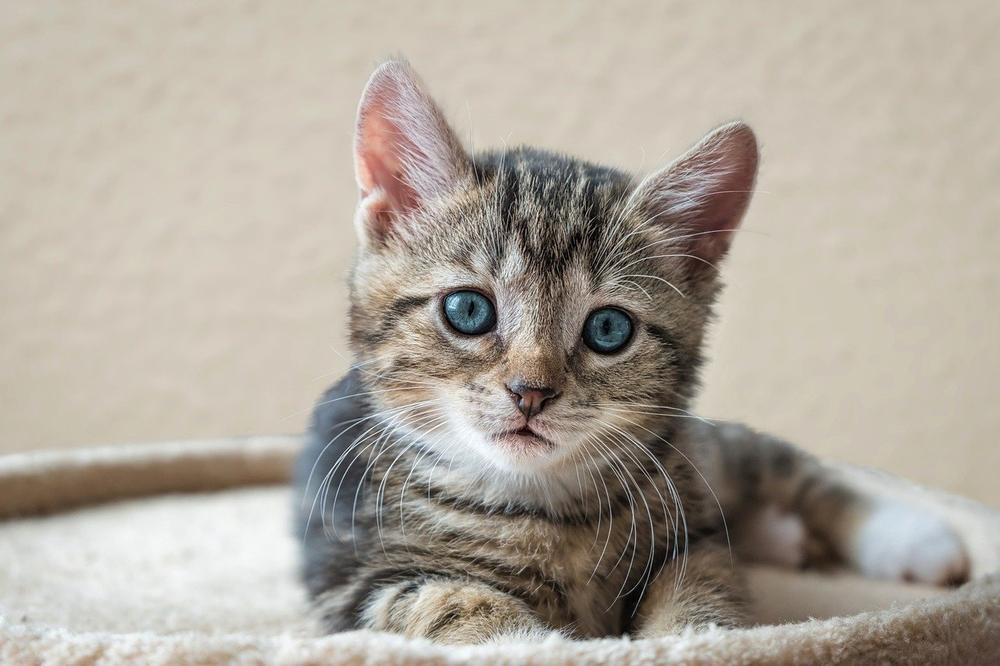How to Deal With a Cat That Is Aggressive Towards Guests

Tired of feeling like a zookeeper in your own home?
Wondering if your fluffy feline friend has secretly joined the WWE?
Well, pull up a chair and let me ask you this:
Have you ever been trapped in a never-ending cycle of frustration with your cat's aggressive antics?
If so, you've come to the right place.
Let's dive into the world of fur-covered fury and find some answers, shall we?
Let's begin.
Creating a Safe Space for Your Cat
Creating a safe space for your cat is crucial for their well-being and reducing aggressive behavior towards guests. Here are some key steps to consider:
- Identify triggers: Take note of what causes your cat to become aggressive or fearful. This could be loud noises, sudden movements, or unfamiliar scents.
- Gradual exposure: Introduce your cat to these triggers slowly and in controlled environments. Start with low levels of exposure and gradually increase over time.
- Provide an escape route: Your cat should have access to a safe hiding place where they can retreat if they feel overwhelmed. This could be a cozy cat bed, a designated room, or even a cat tree.
- Educate guests: Inform your guests about your cat's body language and how to interact with them. Explain that sudden movements or direct eye contact may be perceived as threats.
- Observe from a distance: Create vertical spaces like cat trees or shelves that allow your cat to observe guests from a safe distance. This helps reduce stress and potential aggression.
- Avoid aggressive activities: Discourage guests from engaging in play that could be seen as attacks, such as rough petting or pulling on the cat's tail.
- Socialization: Gradually expose your cat to new scents and sounds to help desensitize them to unfamiliar stimuli.
By following these steps, you can create a safe and stress-free environment for your cat while also ensuring the comfort and safety of your guests. 😺
Main points I'll expand upon further down this article:
- Recognize signs of territorial aggression through body language and behavior.
- Aggression towards strangers can be triggered by various factors.
- Rule out medical reasons for aggressive behavior before addressing it.
- Play aggression in kittens should be addressed promptly.
- Use positive reinforcement and special treats to associate strangers with good experiences.
- Seek professional help if aggression persists or worsens.
- Build a strong bond with your cat and avoid using physical punishment.
- Teach cats to accept and enjoy handling from an early age.
- Avoid punishment techniques, as they can worsen aggression.
- Understand the different types and causes of cat aggression.
But what do you do when your cat's aggression goes beyond just guests?

Well, let me tell you, you should pay attention to subtle changes in your cat's body language!
Recognizing Signs of Territorial Aggression
Pay attention to subtle changes in your cat's body language
When it comes to understanding if your cat is getting territorial, you gotta pay close attention to how they act.
Cats have their own way of showing how they feel, so if you wanna prevent aggressive behavior, you need to be on the lookout for any signs.
Keep an eye out for things like their tail flicking really fast or their ears turning back.
Those little movements could mean that their territorial aggression is building up, and it's better to deal with it early on.
Understand their body language and observe changes
To recognize territorial aggression in your cat, you need to get to know their body language. Watch their pupils, the position of their ears, how their tail moves, and where their whiskers are.
These signals can really tell you a lot about what your cat is feeling.
When your cat feels like being offensive, they'll try to appear bigger and scarier.
On the other hand, when they feel defensive, they might try to look smaller.
By paying attention to these physical cues, you can understand just how aggressive your cat is becoming.
Recognize fear and overstimulation
Fear and being too stimulated are common triggers for territorial aggression in cats.

Watch out for signs like hissing, big dilated pupils, or a twitchy, wagging tail.
Those behaviors mean that your cat might be anxious, scared, or overwhelmed.
If you ignore these warning signs, things can escalate with your cat growling, scratching, or even biting.
So, when you notice those signs, you must step in and create a calm and safe environment for your cat.
Territorial aggression isn't just about dealing with other animals—it can also happen with strangers, both human and animal.
By understanding and taking the right steps, we can all live peacefully together.
And now, let's delve into another important aspect of understanding your cat's aggressive behavior.
I highly recommend regularly checking and maintaining your cat's dental health.
Taking care of their teeth is not only crucial for their all in all well-being but can also help prevent tooth pain, which can sometimes manifest as aggression...
Addressing Aggression Triggered by Pain
Dental health is crucial for cats to prevent tooth pain and aggression. Chewing toys or treats promote oral hygiene and reduce aggressive tendencies. A veterinary exam is necessary to identify underlying medical conditions that may be causing the aggression. Prompt treatment is essential to prevent injuries and damage.
Regularly checking and maintaining your cat's dental health is crucial.
Tooth pain can manifest as aggression, causing your cat to act out towards guests or exhibit inappropriate social behavior.
You gotta take care of those pearly whites!
Provide chewing toys or treats designed to promote oral hygiene.
Giving your cat something to sink their teeth into can help prevent tooth pain and reduce aggressive tendencies.
However, it's not enough to just focus on dental health.
Addressing aggression triggered by pain in cats requires a thorough examination of possible underlying medical conditions that may be contributing to the aggressive behavior. Toxoplasmosis, hyperthyroidism, and dental disease are all potential culprits.
Even mild forms of aggression have the potential to escalate if left unaddressed.
This poses risks not only to humans but also to other animals in the vicinity.
Cats have sharp claws and teeth that can cause severe lacerations and transmit diseases like cat scratch fever. You should nip this aggressive behavior in the bud.
So, where do you start?
A comprehensive veterinary exam should be your first step.
This will help identify any underlying medical conditions that might be causing the aggression.
Once the diagnosis is made, appropriate treatment can be initiated.

It's critical to address play aggression in kittens and young cats promptly.
If left unchecked, it can lead to injuries to people or damage to your household items.
Prevention is key!
Aggression triggered by pain or frustration can be directed towards both humans and animals.
That's why you need to seek appropriate treatment and alleviate your cat's discomfort.
Furthermore, predatory aggression, which can stem from medical concerns, must be identified and treated by a veterinarian.
Understanding the root causes of aggression will help you develop effective strategies to mitigate the issue.
Taking care of your cat's health goes beyond physical well-being.
It impacts their behavior and interactions with others.
So, go ahead, check those chompers, and ensure your cat’s aggressive behavior becomes a thing of the past.
And when it comes to addressing aggression triggered by pain, remember, there's more to it than just dental health.
If you're dealing with a male cat attacking a pregnant female, I understand your frustration.
That's why I've written a helpful blog post that delves into why this behavior occurs and how to address it.
So, if you're looking for answers, I highly recommend checking out my article Male Cat Attacking Pregnant Female.
Trust me, I've got you covered.
Enhancing Your Cat's Environment Through Enrichment Strategies
To keep your indoor cat mentally stimulated and satisfy their instinctual predator needs, create DIY puzzle feeders or scatter food throughout your home. This simple act not only alleviates frustration and potential aggression but also benefits cats like you who have limited space and minimal environmental diversity.
Furthermore, employing positive reinforcement techniques and offering special food rewards can help associate positive experiences with unfamiliar individuals, aiding in your socialization journey.
So go ahead, give these methods a try and provide your feline friend with the mental and emotional nourishment they crave—after all, it's beneficial for both of you.
Exploring Medication for Aggressive Cats as a Last Resort
| Medication Type | How It Works | Potential Side Effects |
|---|---|---|
| Antianxiety medications | Help reduce anxiety and calm aggressive behaviors | Drowsiness, loss of appetite, increased heart rate |
| Pheromone-based therapies | Mimic natural calming pheromones to promote a sense of security and calmness | None |
| Consult with a veterinarian | Essential step to determine the right medication and dosage for your cat | Vary depending on the medication and cat's individual health |
| Professional help | Recommended if aggression persists or worsens | Behavior modification techniques may be necessary for long-term success |
If other behavioral techniques have failed to manage your cat's aggressive tendencies, consult with your veterinarian about possible medication options.
Sometimes, our furry friends just need a little extra help. And that's nothing to be ashamed of.
Your vet may prescribe antianxiety medications or pheromone-based therapies to reduce aggressive behavior in your cat. These medications can make a real difference when it feels like nothing else is working.
However, let me be clear...
Medication should always be a last resort. You should exhaust all other options and approaches before considering medical intervention.
I know it can be frustrating dealing with an aggressive cat. Sometimes, the situation feels overwhelming and you just don't know what to do.
But here's the deal...
Don't face this challenge alone.
If your cat's aggression persists or gets worse, seek professional help.
Aggression in cats can be dangerous and complex, and treating it independently can be tricky.
By bringing in a professional, you're ensuring the safety and well-being of both you and your cat.
So don't hesitate to reach out for assistance.
Empowering Cat Owners: Unveiling Root Causes and Supporting Aggression
Here's how you can help your cat with aggression in 10 simple steps:
- Figure out why your cat is being aggressive - maybe it's fear or protection.
- Use positive reinforcement to encourage good behavior and reward your cat when they stay calm.
- Introduce your cat slowly to things that trigger them, so they start associating them with happy vibes.
- Build a strong bond with your cat - it helps prevent aggression and lets you tackle problems effectively.
- Don't ever force physical contact or punish your cat - that'll just make the aggression worse.
- Start teaching your cat to enjoy being handled from a young age - it'll make life easier for both of you.
- If the aggression persists, reach out to online communities or professionals for advice.
- Avoid using punishment techniques that can make the aggression even more severe.
- Manage the aggression by rewarding your cat's calm behavior and using counter-conditioning techniques.
- Learn about different types of cat aggression like petting-induced, maternal, and idiopathic aggression.
Understanding your cat's aggression is key - it helps you handle it correctly and create a safe space for both of you.
And that wraps up today's article.
If you wish to read more of my useful articles, I recommend you check out some of these: Why Does My Cat Slap Me With His Tail, Are Cats Protective of Their Kittens, Cat Humping While Kneading, and Why Does My Cat Purr and Bite Me
Talk soon,
-Sarah Davis